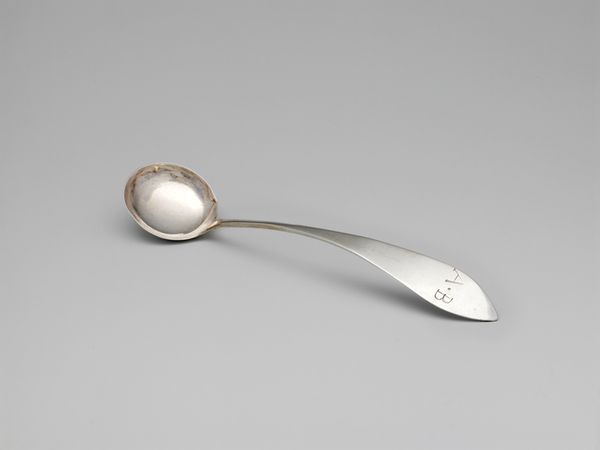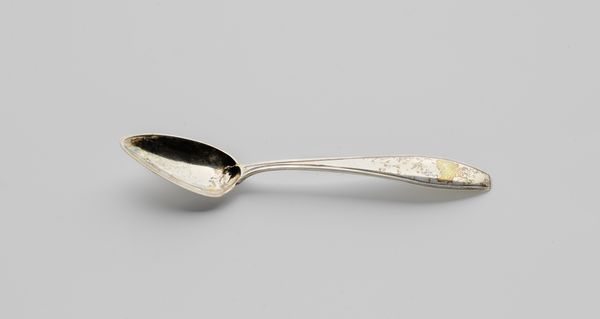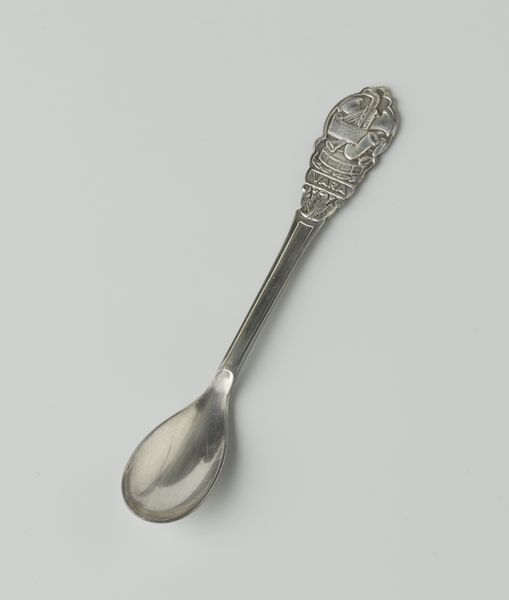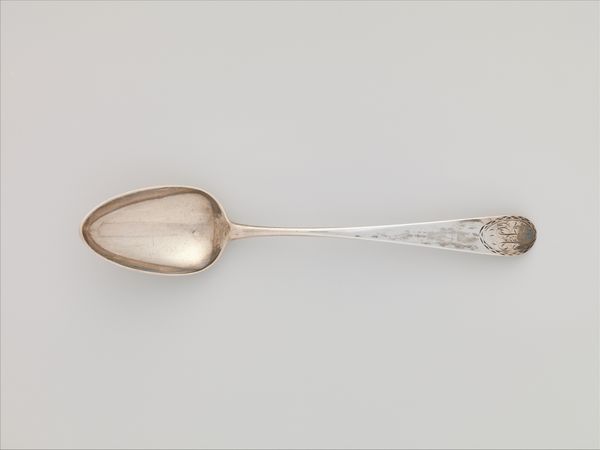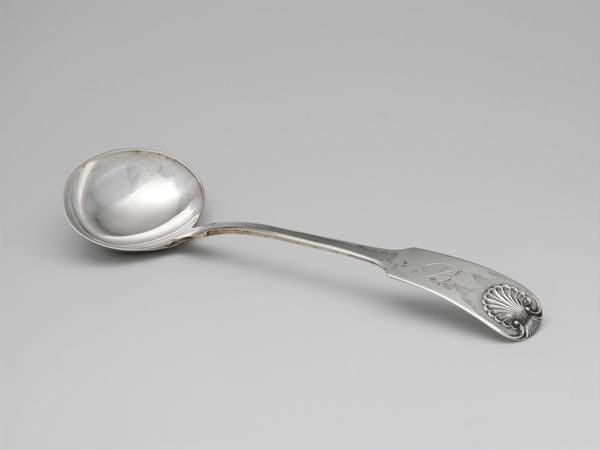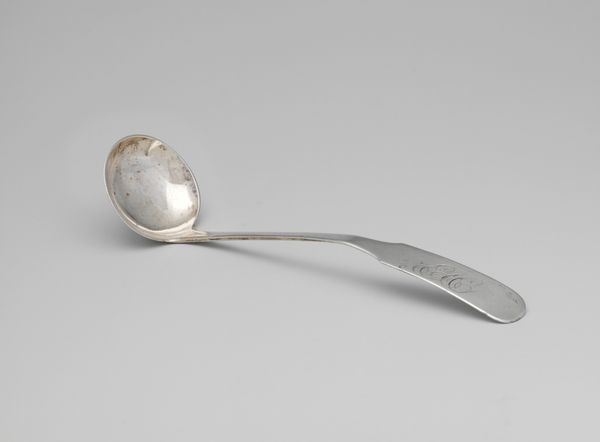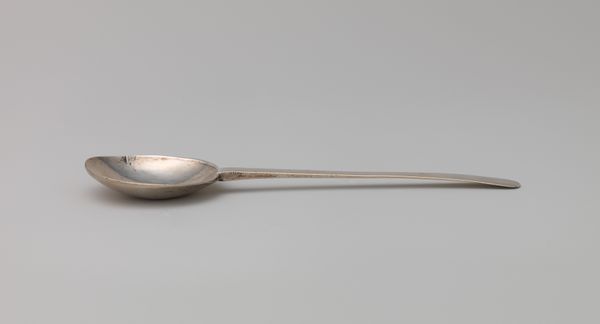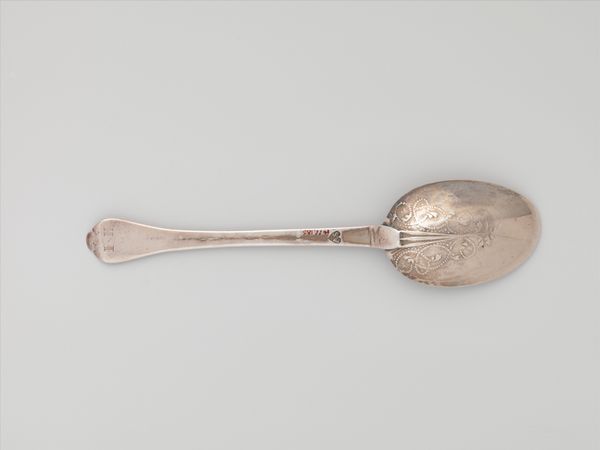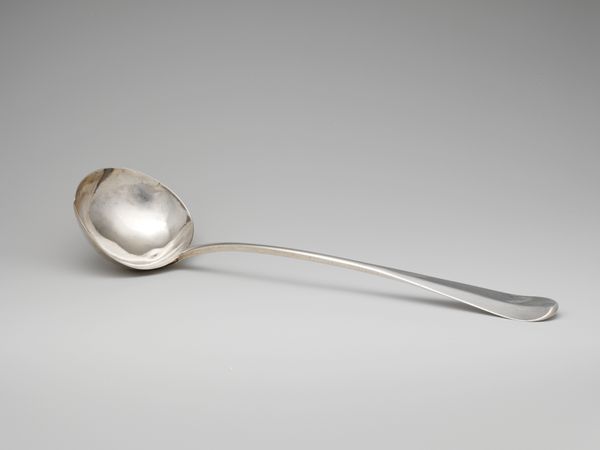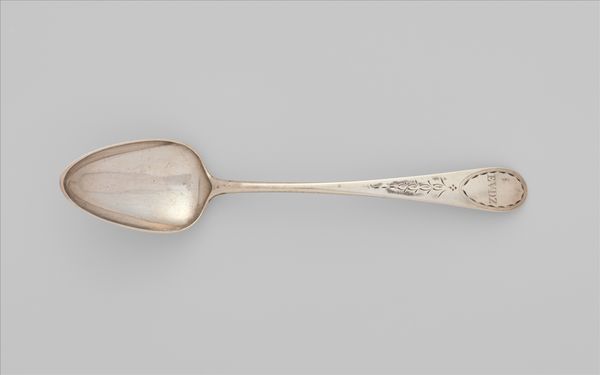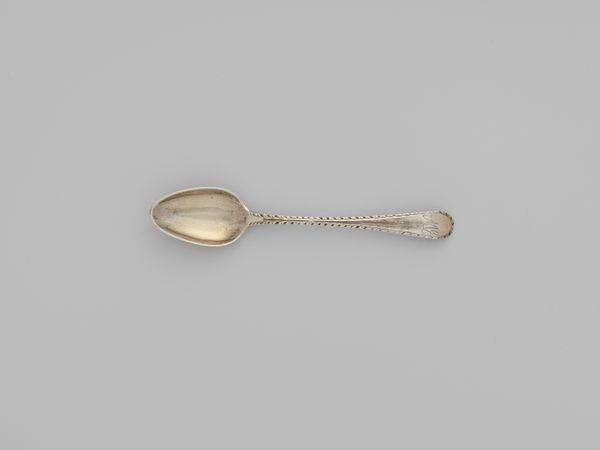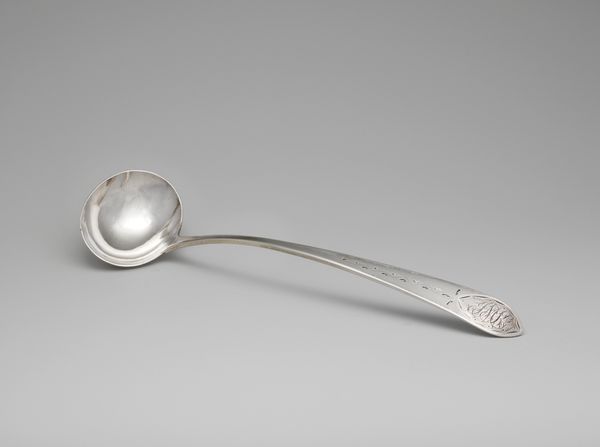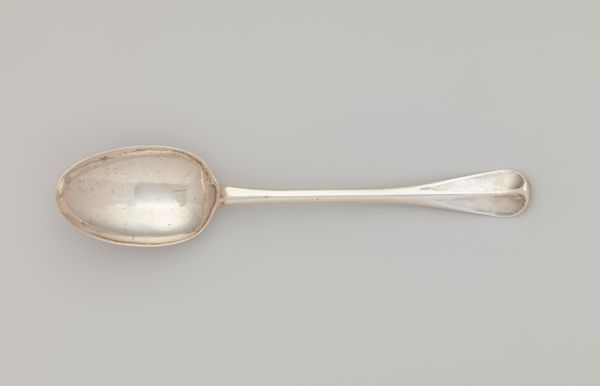
silver, metal, sculpture
#
silver
#
metal
#
sculpture
#
united-states
#
decorative-art
Dimensions: L. 9 1/8 in. (23.2 cm)
Copyright: Public Domain
Editor: Here we have a silver ladle crafted by Samuel Tingley between 1775 and 1796. It’s deceptively simple, really, almost purely functional, but that reflective surface catches the eye. What strikes you about this seemingly mundane object? Curator: The appeal isn’t really the function but in the silver itself and the act of creation and consumption surrounding this object. Silver wasn't readily available. The resources to extract, refine and form this are extensive. We have to consider labor, extraction of the ore, its transportation, its manufacture. Editor: So you are less interested in its design, which is in the style of decorative art, and more on how it came to be? Curator: Precisely. Its mere existence speaks volumes about the social stratification and economic systems of the time, wouldn't you agree? It implies the existence of capital, skilled labour, access to raw materials. For whom was it produced, and what would they have been using it for? Soup, gravy, punch perhaps? Editor: That’s interesting. It transforms a simple utensil into a potent symbol of power and production. You are right. I initially only thought of its decorative aspects. Curator: By examining its materiality and the labor embedded within, we are acknowledging its silent narrative, offering a stark contrast to purely aesthetic or art historical interpretation. Editor: It does make you wonder about the stories it could tell about the hands that made it and the lives of those who used it. Thanks for widening my view of such an everyday object. Curator: A good way to approach art; always challenge assumptions by returning to the basic process of the making. It makes this piece a great learning opportunity, wouldn't you say?
Comments
No comments
Be the first to comment and join the conversation on the ultimate creative platform.
